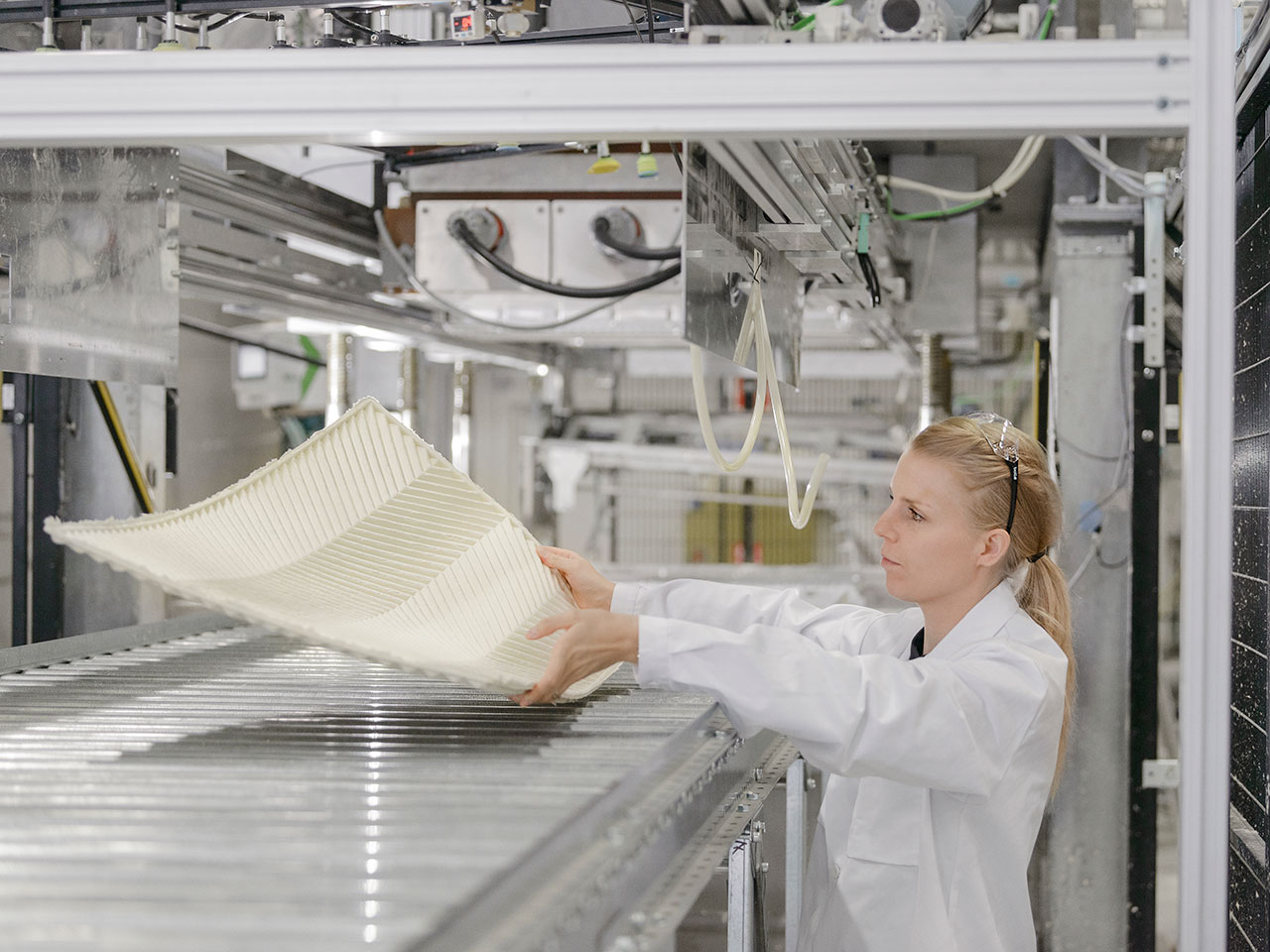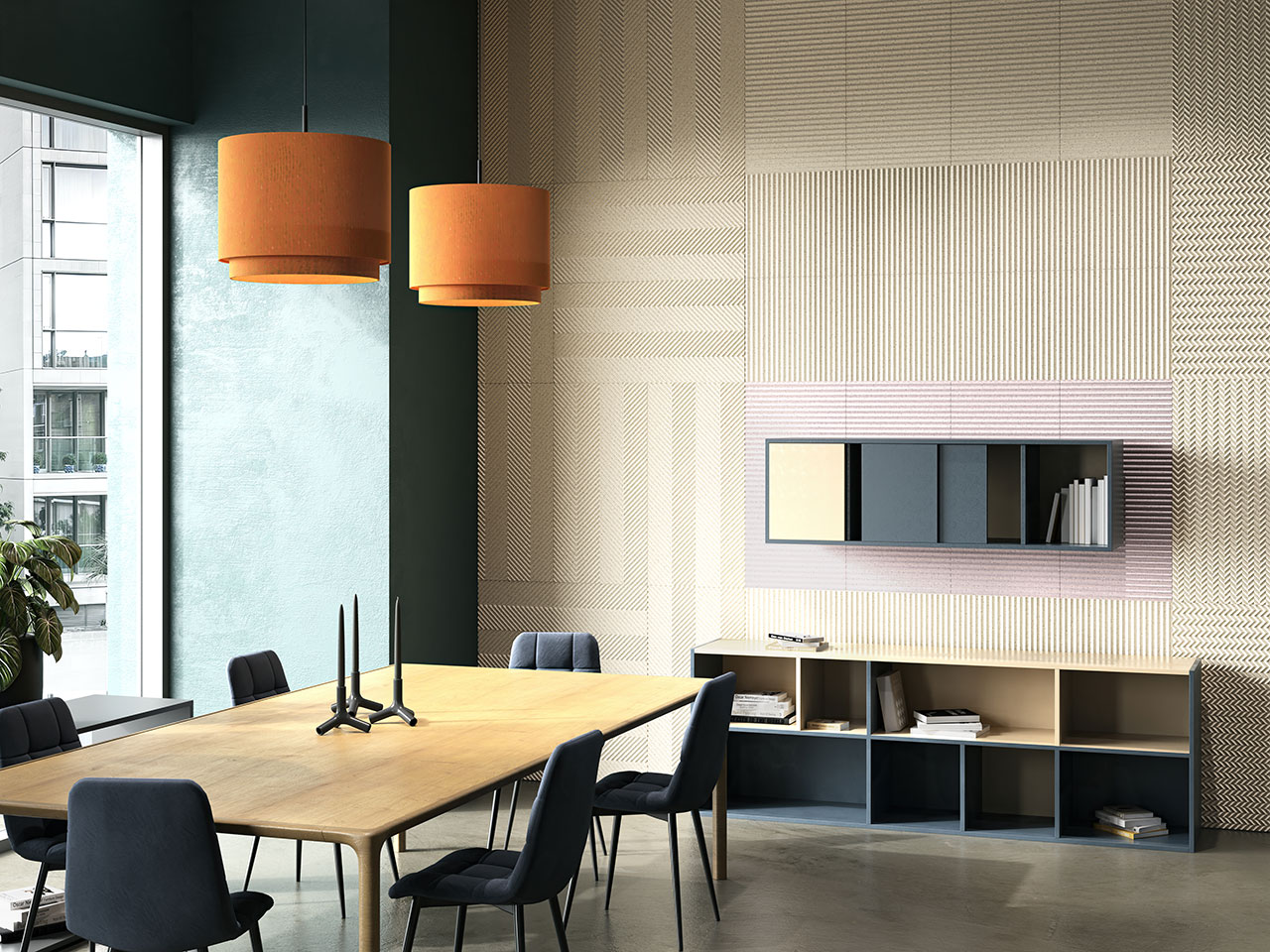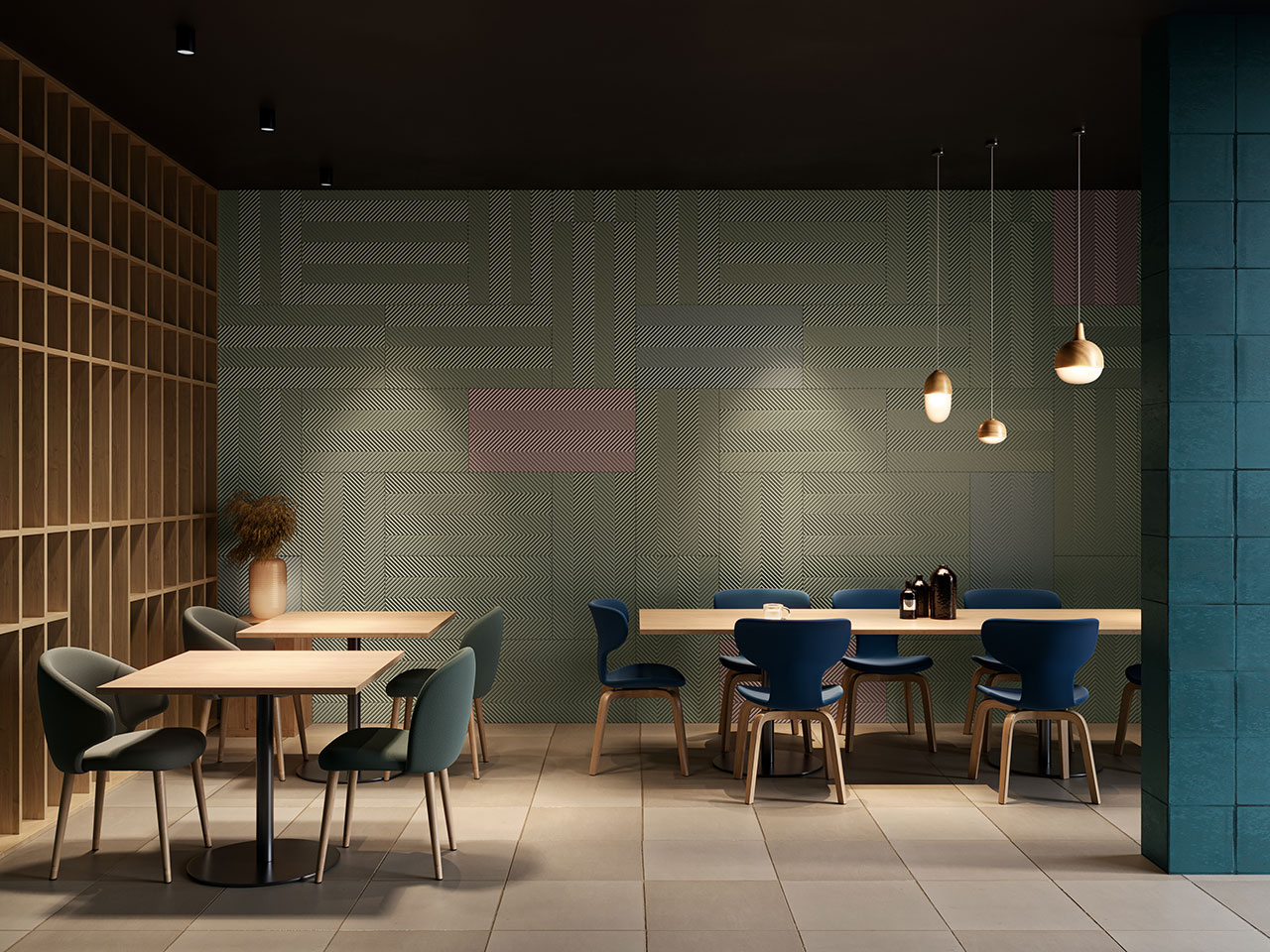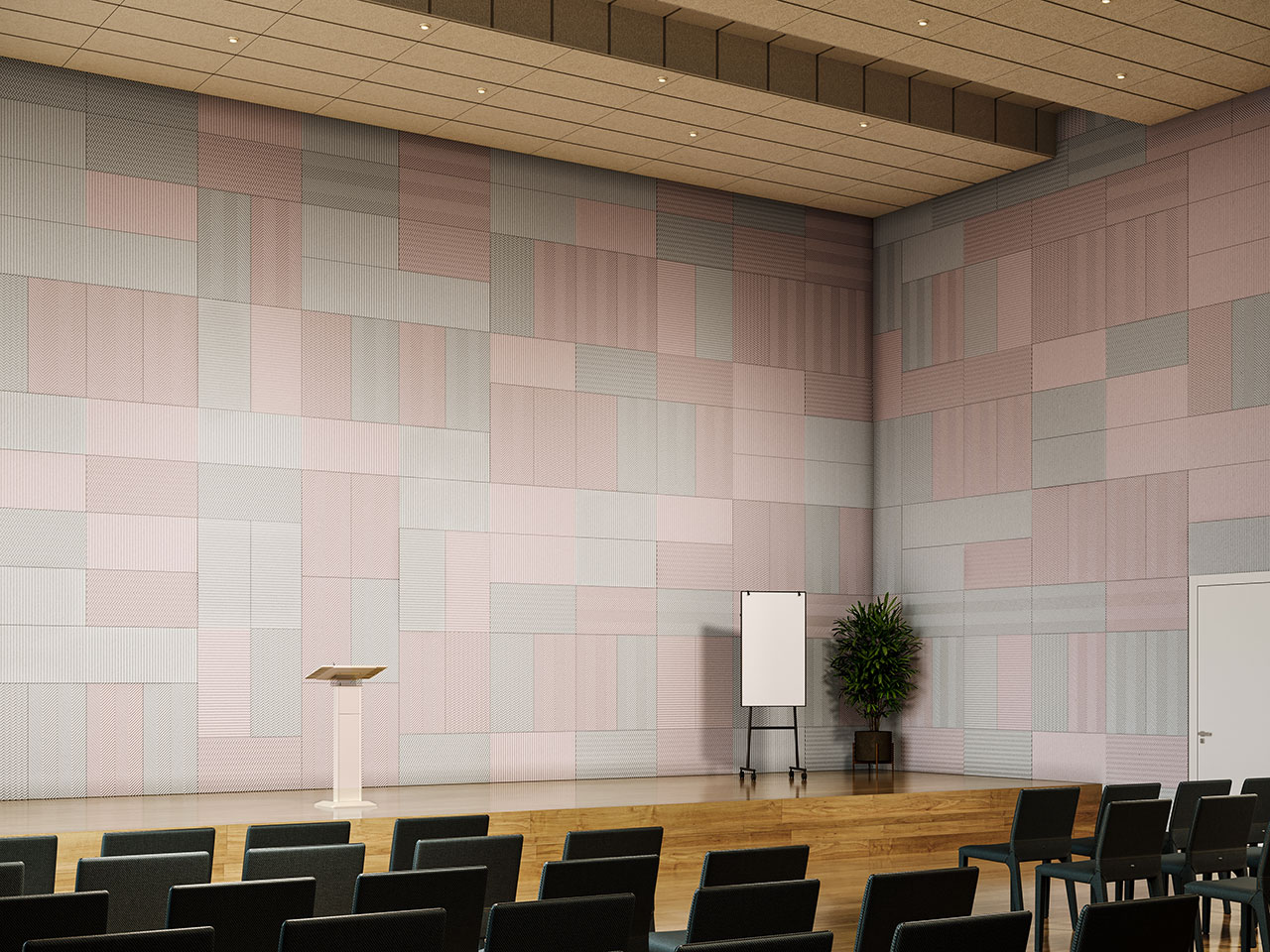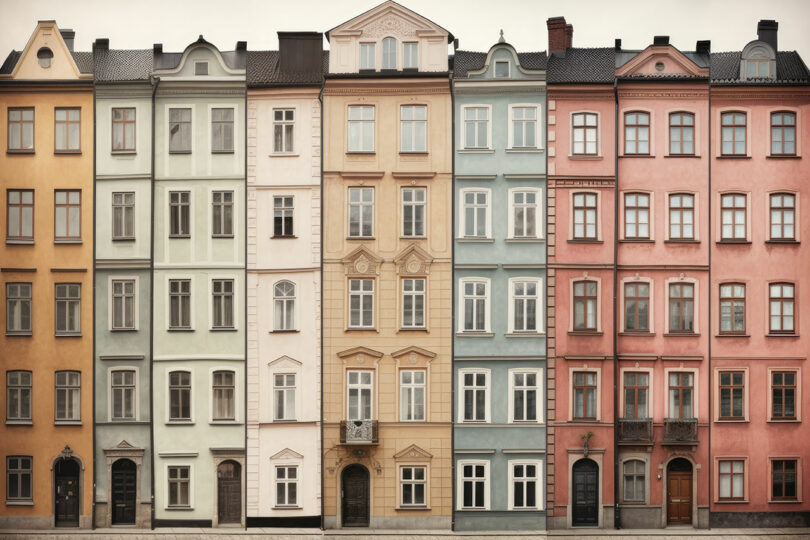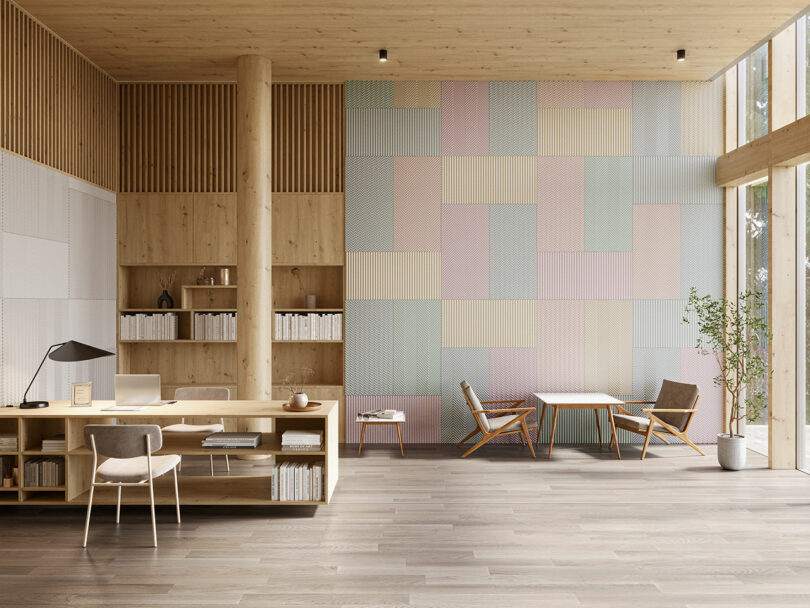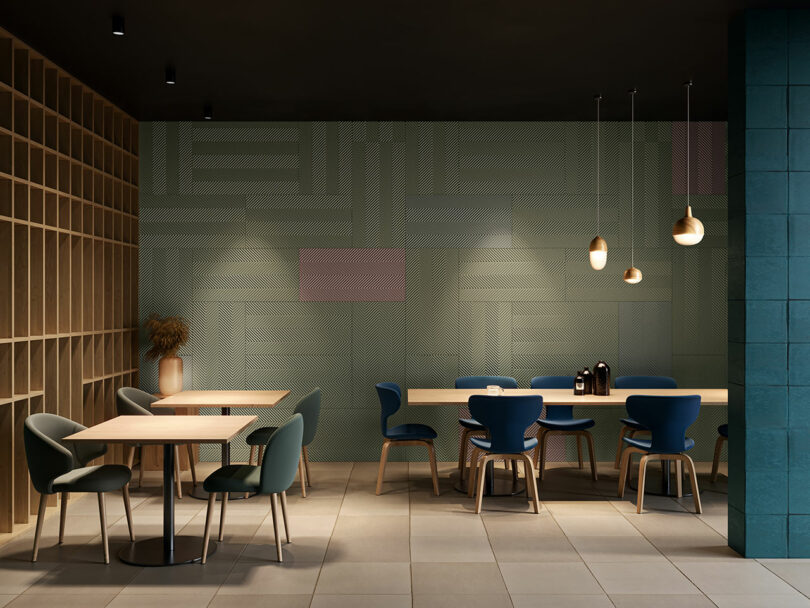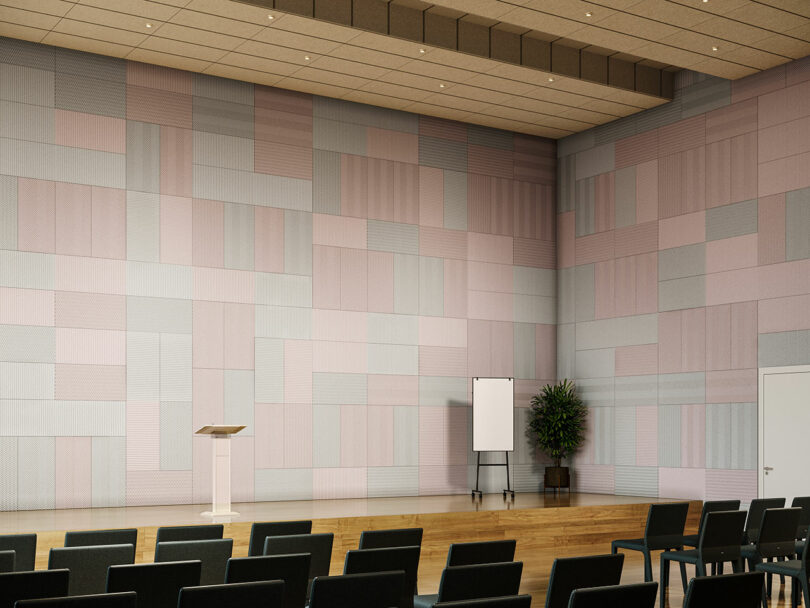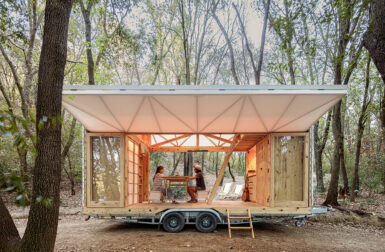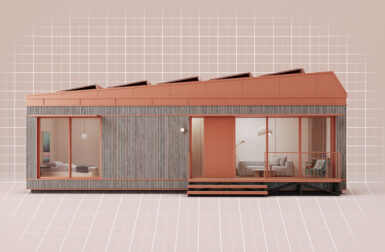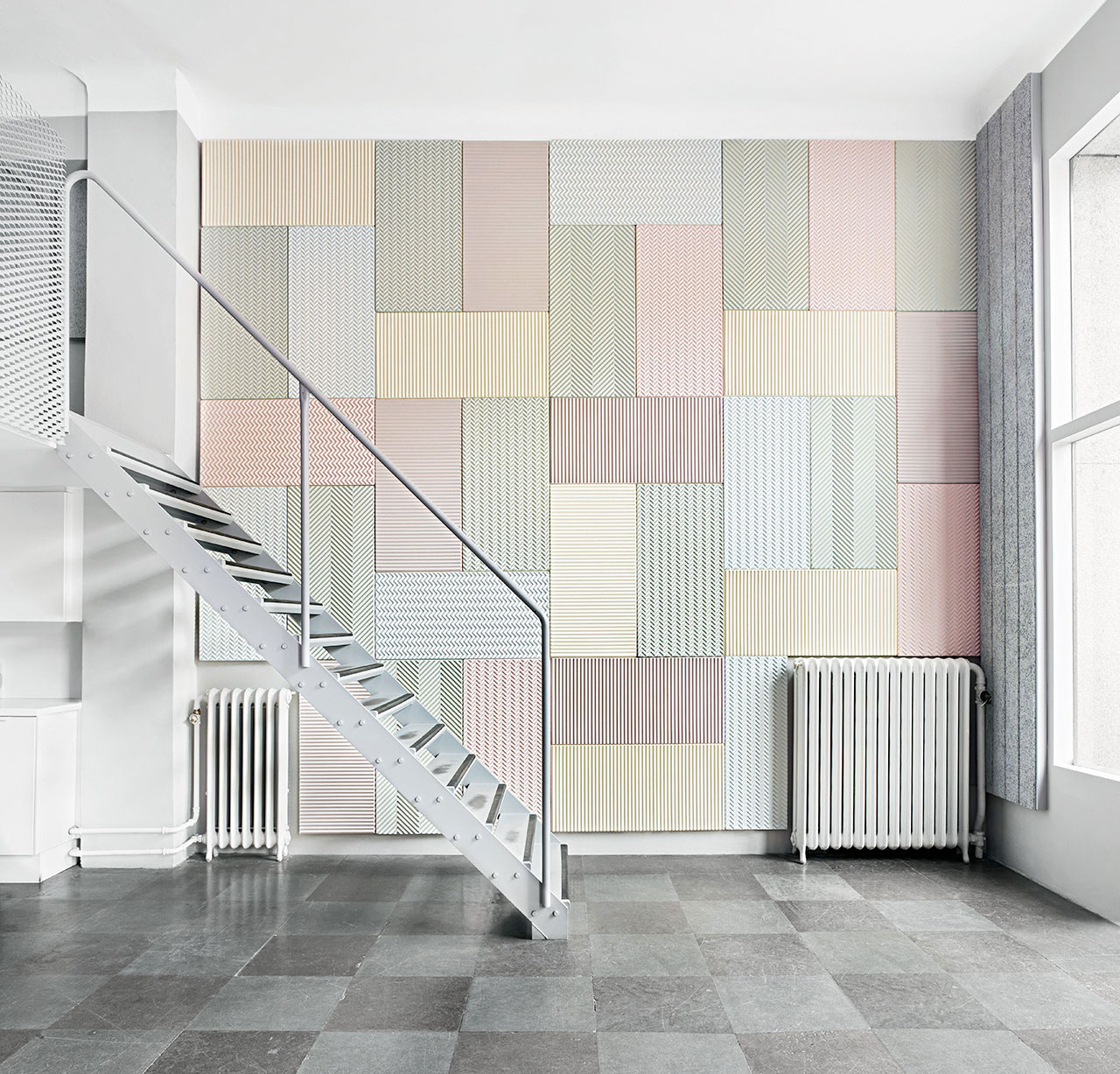
BAUX joins the likes of ABBA, IKEA, and Volvo as an iconic Swedish export cementing itself in the zeitgeist with their inaugural launch into the American market upon the Bio Colors unveiling – six new pastel hues across the Origami Acoustic Pulp range made solely from natural ingredients. The fresh palette, inspired by traditional Nordic architecture, contemporizes their 100% bio-based product that originally launched in 2019 at the Stockholm Furniture Fair.
The breakthrough builds upon three decades of sustainable design and color theory informing the range’s nuanced narrative, which includes Yellow Terra, Red Mud, Green Soil, Blue Chalk, Natural Wheat, and Rose Clay. Each panel is a particular amalgam of biodegradable raw materials including plant extracts like cellulose fibers and citric acid, chalk, minerals, and earth pigments. Unlike other products that co-opt “green” language, these VOC-, plastic-, and petrochemical-free paints give a unique matte finish while delivering on the promise of a healthier indoor environment.
It’s important to note the “origami” formwork as much as the aesthetic. Available in three linear styles – Sense, Pulse, and Energy – the durable yet lightweight tiles feature a nano-perforated surface, which accepts sound waves then stymied by the honeycomb chambers on the reverse. This architecture also reduces the amount of material used in the manufacturing process making it an inherently sustainable solution.
“BAUX’s unwavering commitment to sustainability is aligned with the broader design industry’s shift towards responsible choices, contributing to a circular economy,” says CEO and co-founder Fredrik Franzon. “In essence, at BAUX, we transcend the provision of acoustic panels; we humbly shape the future of interior architecture by seamlessly integrating sustainability, functionality, and aesthetics, with a special emphasis on the vibrant possibilities introduced by our Bio Colors range.”
From the din of a burgeoning metropolis to the cacophony of a corporate coffee shop, acoustic considerations are becoming increasingly important. Architectural space has a significant impact on emotion with neurophysiological effects on the human brain. The auditory properties of an interior space have noteworthy implications on the design’s success, performance, and how the room is perceived. Sound mitigation is emerging as a fashionable tool to modify those beyond the context of a building requirement to combat noise pollution.
And gone are the days of specifiers requesting these products exclusively for the trade. Modern uses range from the traditional implementation in offices, academic settings, healthcare facilities, restaurants, and public forums to accessible applications in the home or even modification of privacy screens and furniture. BAUX seizes on the opportunity to contribute to the greater conversation on its use.
“The positive impact of our proprietary products addresses acoustic challenges in modern spaces and serves as a design element, allowing architects and designers to express creativity,” Franzon continues. “As these considerations become increasingly important, we remain at the forefront of redefining how individuals experience their built environment.”
For more information on the Acoustic Pulp Bio Colour line, visit baux.com.




